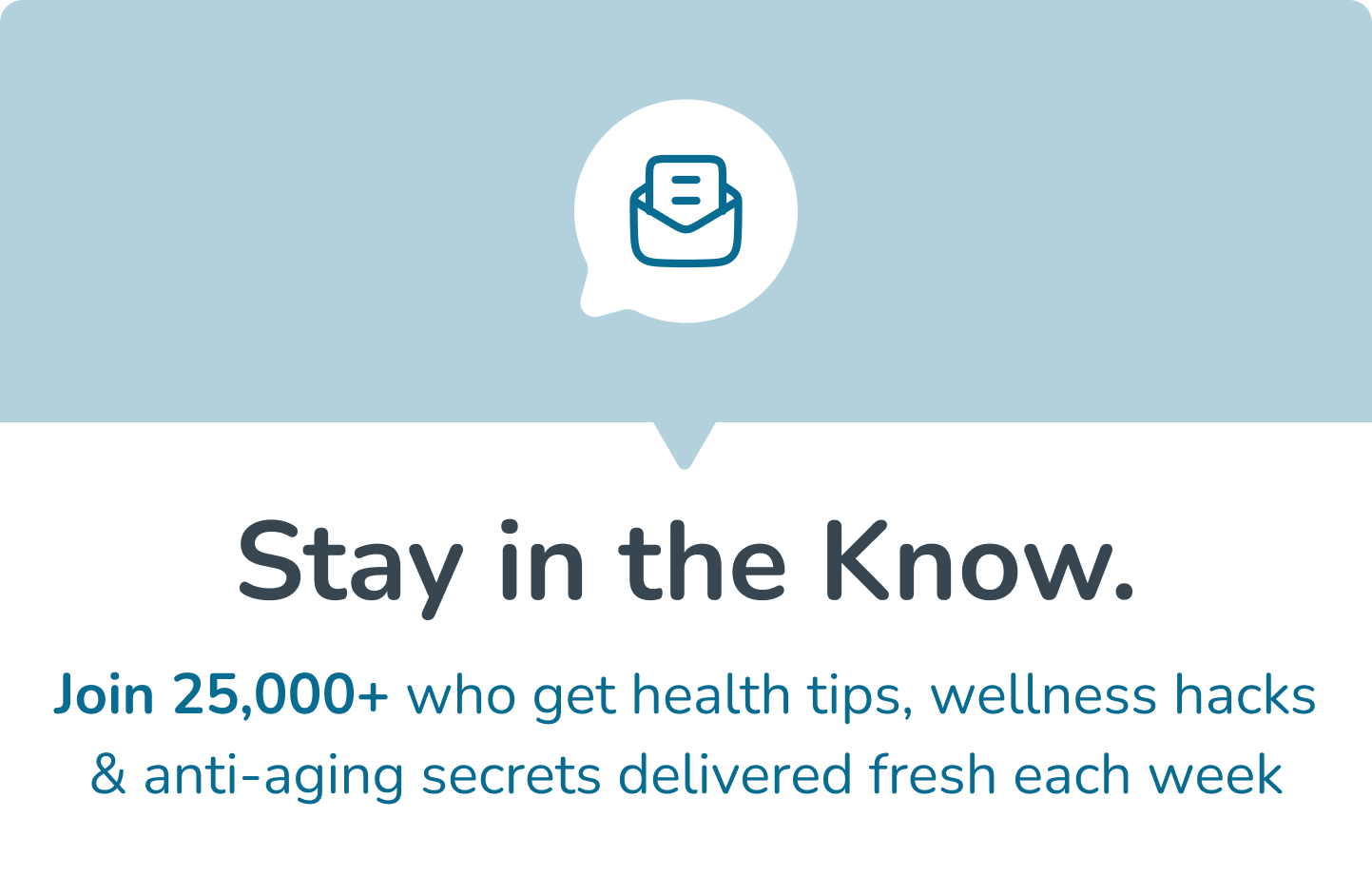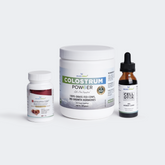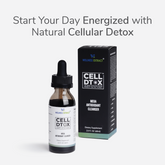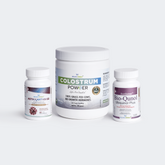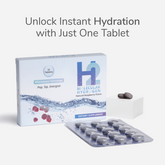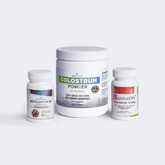Estimated Reading Time: 7 minutes
|Stubborn acne, missed periods, and that 'not losing at all' body weight! Sounds like a typical teenage drama? Maybe not. It could be Polycystic Ovary Syndrome (PCOS).
Many girls (and even parents) assume PCOS is an adulthood problem (yes, those fertility issues). But it can show up as early as your first period. Still, it's most often diagnosed in women in their 20s and 30s. Why?
PCOS doesn't look the same at 16 as it does at 30.
Yes, you heard it right! PCOS symptoms look different in teens and adult women. And that difference makes it tricky. Let's break it down.
Why PCOS Looks Different at 16 vs 30
In simple words, PCOS is a hormonal imbalance, which affects ovulation, skin, and metabolism. Here are the reasons why PCOS symptoms don't look the same in teens and adults.
-
Puberty Hormones Blur the Symptoms
During puberty (around 8–13 years), your body goes through hormonal ups and downs. Irregular periods or acnes seems to be normal teenage symptoms. In fact, the majority of girls report menstrual irregularities after menarche (first period). As the body begins menstruation, the first few cycles may be irregular which makes it hard to tell if an underlying condition such as PCOS is present.
And that's where PCOS hides. Most girls and even parents assume it'll settle down on its own.
-
Lifestyle Magnifies the Problem Later
But, as you grow (in your 20s or 30s), life looks different. The stress around you (work or studies), late-night snacking, and zero workout routine make PCOS symptoms louder.
Those mild teenage symptoms later turn into stubborn weight gain, fatigue, and major cycle issues. As the condition progresses, many women also experience resistant weight loss — even with consistent diet and exercise — along with fertility challenges and insulin resistance.
Therefore, awareness is important. If diagnosed and treated in early puberty, you can prevent further complications. Let's go without wasting another minute and see how PCOS looks different in teens and adults.
Read More: How Hormones Control Your Body
PCOS in Teens: A Closer Look
Though puberty often hides PCOS, it never disappears.
Common PCOS Symptoms in Teenage Girls
Here are the common PCOS symptoms that teenage girls and their parents should look for.
-
Acne: Around 85% of teens have acne. However, PCOS acne is different. It usually affects the "hormonally sensitive" regions of your face, including cheeks, jawline, chin, and upper neck. Also, such acnes have a more cystic appearance. Also, PCOS-related acne is more inflamed and harder to treat (your niacinamide or salicylic serum won't work, probably)
-
Hirsutism: That refers to unwanted hair growth. In PCOS, the female body releases excessive male hormones. Results? Coarse, dark hair on areas like the upper lip, chin, chest, or back.
-
Irregular Periods: Yes, cycles can be irregular for 1-2 years after your first period. But, if the irregularities persist after 2 years or you notice an unpredictable pattern (like periods absent for straight 3 months), it can be a sign of PCOS.
Read More: Find Out Normal Testosterone and Estrogen Levels in Women
PCOS Diagnosis in Teens
The PCOS diagnosis in teens is way trickier than the symptoms. Even a PCOS ultrasound (which detects cysts in the ovaries) doesn't count. Why? Ovarian cysts are pretty common among teenagers since the body is adapting to sexual and hormonal changes. Moreover, they are harmless, temporary, and resolve on their own without treatment.
Therefore, international guidelines advise doctors to watch out for two signs to diagnose PCOS during the teenage years.
-
Irregular cycles
-
Signs of androgen excess
If a teen shows just one of these signs, they're often labeled as at-risk. Doctors recommend revisiting a few years later (when their hormonal pattern is clearer).
PCOS in Adult Women: Why Different
By the time women reach their 20s to 30s, the undercover PCOS symptoms start showing their true colors.
Key PCOS Symptoms in Adult Women
-
Fertility Struggles: Many women only discover they have PCOS when they start trying to conceive. PCOS often causes irregular or absent ovulation — and without ovulation, conception simply cannot occur. This makes PCOS one of the leading causes of infertility in women.
-
Weight Gain: Due to a sedentary lifestyle, adult women are more prone to conditions like insulin resistance and type 2 diabetes making managing weight management more difficult than in puberty.
-
Scalp Thinning: In PCOS, many women experience a shift from teenage acne and excess hair growth to something more distressing in adulthood — female-pattern hair loss.
This happens because excess androgens, especially higher testosterone levels, shrink the hair follicles over time. As the follicles become smaller, the hair they produce becomes thinner, weaker, and more prone to breakage.
Over months to years, this leads to visible thinning around the crown and parting line. Unlike shedding, this type of hair loss is gradual and linked directly to hormonal imbalance
-
Skin Darkening (acanthosis nigricans): Many adult women with PCOS get dark skin patches, especially in the folds of the neck, armpits, groin (between the legs), and under the breasts.
Read More: The Top 5 Hormonal Changes Every Women Undergo After 35+
PCOS Diagnosis in Adults
With visible signs and patterns, diagnosing PCOS in adult women is more straightforward than in teens. But it still requires a combination of clinical signs and tests.
Doctors nowadays follow international guidelines (the advanced Rotterdam Criteria, which means you need at least 2 out of 3 of the following, as well as the exclusion of differential diagnoses with similar clinical features:
-
Ovulatory Dysfunction: Irregular or absent periods (if your cycles are longer than 35 days or you often miss them)
-
Clinical or biochemical hyperandrogenism: High androgens (detected through signs such as excess hair on the face, acne, scalp thinning, or a blood test)
-
Polycystic Ovaries (20 or more small follicles on one ovary) or elevated levels of anti-Müllerian hormone (produced by the ovaries)
Here's a quick fact check: Having cysts alone doesn't confirm PCOS, even in adult women. It must be accompanied by other signs as well.
Additionally, the doctor may recommend other tests, like blood sugar, lipid profile, and thyroid levels, to rule out other possibilities.
Also Read: How To Lower Estrogen Levels In Females Naturally
|
Did You Know PCOS is a diagnosis of exclusion, meaning your doctor will first rule out other conditions (like thyroid problems or adrenal issues) that mimic PCOS symptoms. |
Once You Identify PCOS, Managing It Gets Easier
The earlier you spot PCOS, the better you can manage it. Whether you're 16 or 30, lifestyle changes are the first line of defense against PCOS hormonal imbalance.
-
Maintain your ideal body mass index (BMI).
-
Cut down on processed sugar and junk foods.
-
Eat a balanced diet, stay hydrated, and maintain good nutrition.
-
Exercise regularly, focus on moderate workouts, and weightlifting.Working with a practitioner such as a naturopathic doctor or family doctor on an individualized care plan will take out the guessing & get you results fastest
-
Stay aware, avoid hormonal myths or any shortcuts.
-
Take 8-10 hours of sound sleep for hormonal support.
-
Track down your period cycle to identify possible patterns.
Read More: The Best & Worst Foods for Hormonal Balance: What to Eat & Avoid
However, adults must follow extra care practices like:
-
If fertility is a concern or symptoms are severe, seek medical assistance.
-
Also, since adults are more prone to related issues like diabetes, high cholesterol, and hypertension, regular health checks are key.
The Final Takeaway
PCOS isn't one-size-fits-all, nor are its symptoms. What looks like 'normal' acne or irregular periods at 16 can turn into something bigger by 30 if ignored.
Best to stay educated and acknowledge yourself (and your children). If something feels off, see a doctor. Timely, consistent care can definitely make an impact (no matter what age).
Disclaimer: This article is for informational purposes only and should not replace professional medical advice, diagnosis, or treatment. Always consult your healthcare provider for any concerns regarding PCOS or related symptoms.
Frequently Asked Questions (FAQs)
Q1. Does PCOS stop at a certain age?
No, specific hormonal imbalances don't change if left untreated throughout life. Therefore, rather than waiting, you must seek medical help.
Q2. How to treat PCOS at an early age?
Maintain ideal body weight, avoid junk food, and consume a balanced diet and plenty of water. Also, follow a regular workout to tackle PCOS at an early stage.
Q3. What foods should I avoid with PCOS?
Avoid foods that can dysregulate your blood sugar levels, like processed sugar and packaged foods.
Q4. Who is more likely to get PCOS?
Women having a family history of PCOS or having underlying conditions like insulin resistance and diabetes are more vulnerable.
Q5. Is PCOS reversible?
No, PCOS isn't completely reversible. However, by following an individualized treatment plan from a healthcare practitioner, you can live a normal life.
References
-
Shukla A, Rasquin LI, Anastasopoulou C. Polycystic ovarian syndrome. In: StatPearls [Internet]. Updated Jul 7, 2025. Treasure Island, FL: StatPearls Publishing; 2025 Jan-. Available from: https://www.ncbi.nlm.nih.gov/books/NBK459251/
-
Adone A, Fulmali DG. Polycystic ovarian syndrome in adolescents. Cureus. 2023 Jan 25;15(1):e34183. doi:10.7759/cureus.34183. Available from: https://pmc.ncbi.nlm.nih.gov/articles/PMC9951123/ rel="nofollow"
-
Sinclair R, Patel M, Dawson TL Jr, et al. Female pattern hair loss and androgen excess: a report from the multidisciplinary androgen excess and PCOS committee. Br J Dermatol. 2019;165(Suppl 3):12–18. doi:10.1111/bjd.18599. Available from: https://pubmed.ncbi.nlm.nih.gov/30785992/
-
Smet ME, McLennan A. Rotterdam criteria, the end. Australas J Ultrasound Med. 2018 May;21(2):59–60. doi:10.1002/ajum.12096. Available from: https://pmc.ncbi.nlm.nih.gov/articles/PMC8409808/
-
Christ JP, Cedars MI. Current guidelines for diagnosing PCOS. Diagnostics (Basel). 2023 Mar 15;13(6):1113. doi:10.3390/diagnostics13061113. Available from: https://pmc.ncbi.nlm.nih.gov/articles/PMC10047373/



















